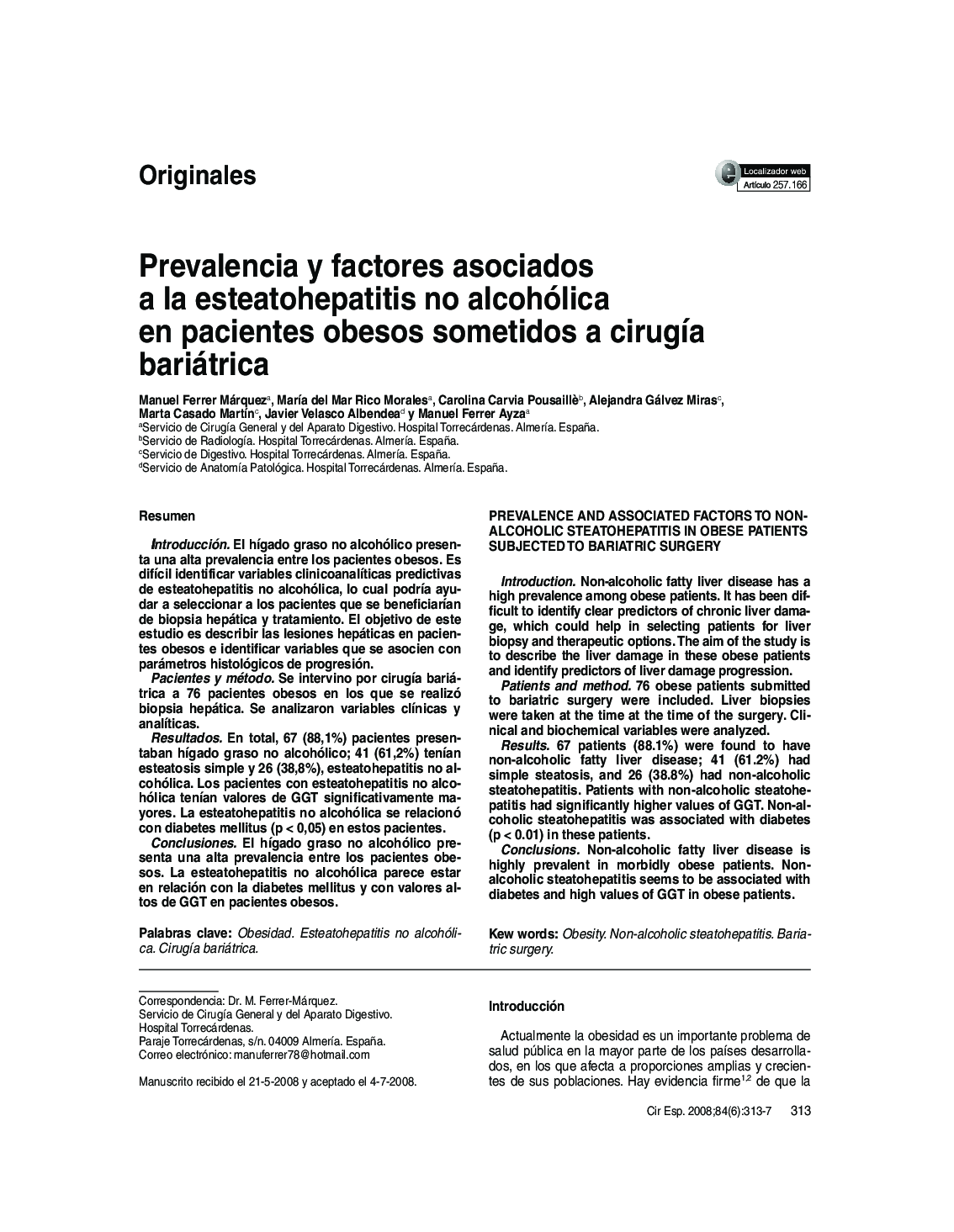| Article ID | Journal | Published Year | Pages | File Type |
|---|---|---|---|---|
| 4254274 | Cirugía Española | 2008 | 5 Pages |
IntroducciónEl hígado graso no alcohólico presenta una alta prevalencia entre los pacientes obesos. Es difícil identificar variables clinicoanalíticas predictivas de esteatohepatitis no alcohólica, lo cual podría ayudar a seleccionar a los pacientes que se beneficiarían de biopsia hepática y tratamiento. El objetivo de este estudio es describir las lesiones hepáticas en pacientes obesos e identificar variables que se asocien con parámetros histológicos de progresión.Pacientes y métodoSe intervino por cirugía bariátrica a 76 pacientes obesos en los que se realizó biopsia hepática. Se analizaron variables clínicas y analíticas.ResultadosEn total, 67 (88,1%) pacientes presentaban hígado graso no alcohólico; 41 (61,2%) tenían esteatosis simple y 26 (38,8%), esteatohepatitis no alcohólica. Los pacientes con esteatohepatitis no alcohólica tenían valores de GGT significativamente mayores. La esteatohepatitis no alcohólica se relacionó con diabetes mellitus (p < 0,05) en estos pacientes.ConclusionesEl hígado graso no alcohólico presenta una alta prevalencia entre los pacientes obesos. La esteatohepatitis no alcohólica parece estar en relación con la diabetes mellitus y con valores altos de GGT en pacientes obesos.
IntroductionNon-alcoholic fatty liver disease has a high prevalence among obese patients. It has been difficult to identify clear predictors of chronic liver damage, which could help in selecting patients for liver biopsy and therapeutic options. The aim of the study is to describe the liver damage in these obese patients and identify predictors of liver damage progression.Patients and method76 obese patients submitted to bariatric surgery were included. Liver biopsies were taken at the time at the time of the surgery. Clinical and biochemical variables were analyzed.Results67 patients (88.1%) were found to have non-alcoholic fatty liver disease; 41 (61.2%) had simple steatosis, and 26 (38.8%) had non-alcoholic steatohepatitis. Patients with non-alcoholic steatohepatitis had significantly higher values of GGT. Non-alcoholic steatohepatitis was associated with diabetes (p < 0.01) in these patients.ConclusionsNon-alcoholic fatty liver disease is highly prevalent in morbidly obese patients. Nonalcoholic steatohepatitis seems to be associated with diabetes and high values of GGT in obese patients.
